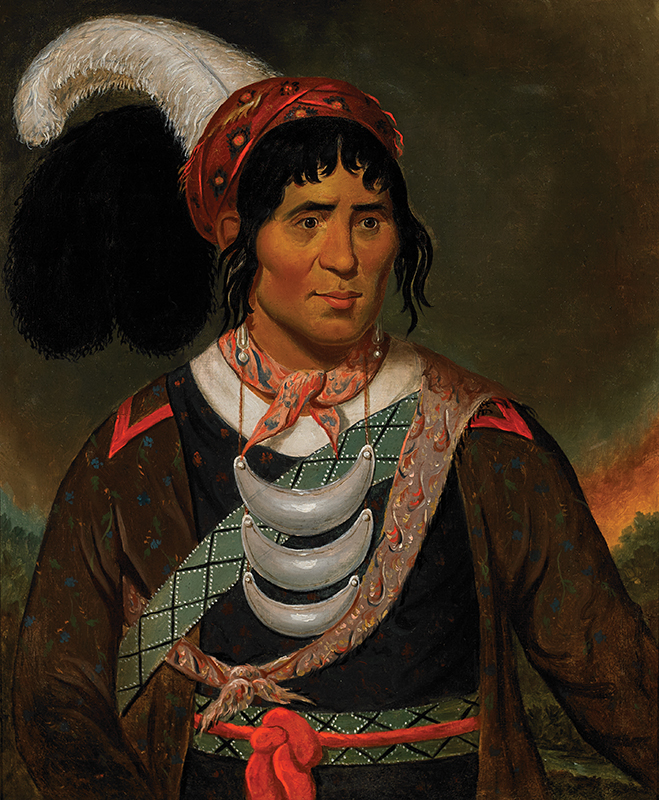
For one who grew up in Puritan New England as I did, among those chilly folk who are sometimes termed “the ice people,” the warm southern charm of Samuel and Roberta Vickers of Jacksonville, Florida, has always been wonderfully disarming.
My visits to their home have also been unforgettable, since they assembled one of the greatest collections of American art in the country, though one with a peculiar focus: paintings of Florida. Recently, they decided to give their collection of some twelve hundred paintings to the Samuel P. Harn Museum of Art at the University of Florida in Gainesville, the largest gift of artworks in the history of the university, and one of the largest in the history of Florida. This provided a pleasant occasion to sit down with Sam to discuss what the Vickerses have accomplished, what got them started, and what they hope their gift will achieve.
What got you interested in collecting?
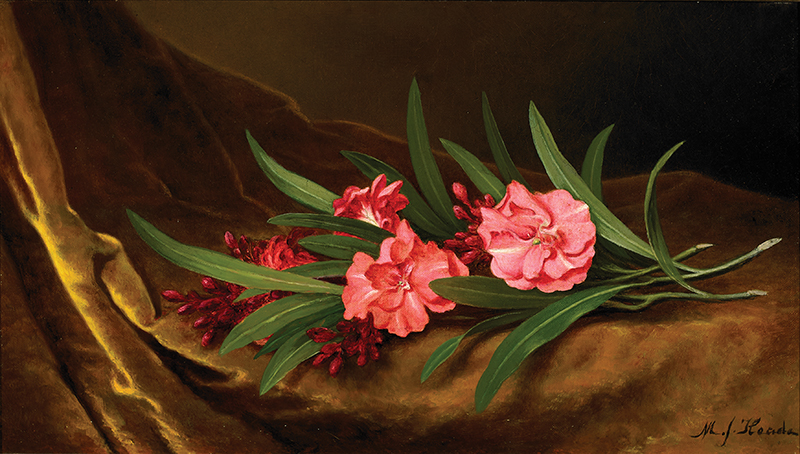
Both our families had some means before the Depression. My grandmother attended the New England Conservatory of Music when she was sixteen. She loved fine furniture and oriental rugs. She went to school with and was a friend of Ima Hogg, whose Bayou Bend Collection in Houston is probably the second-best collection of American furniture after Winterthur’s. Both our families lost everything in the Depression and had to start over. But we had seen beautiful things; we were interested.
We started our collection with furniture. Deanne Levison at Israel Sack helped us. We have a couple of pieces that the State Department in Washington is interested in. We have a chest that’s ranked as a masterpiece in one of Albert Sack’s books. We have a chair that belonged to Elbridge Gerry, who was a signer of the Declaration of Independence and one of the first governors of Massachusetts. It was his personal chair. We enjoyed the hunt and learning about things. One of the first things we did was to buy a set of The Magazine ANTIQUES, going back to the very first issue.
What got you started collecting Florida paintings?
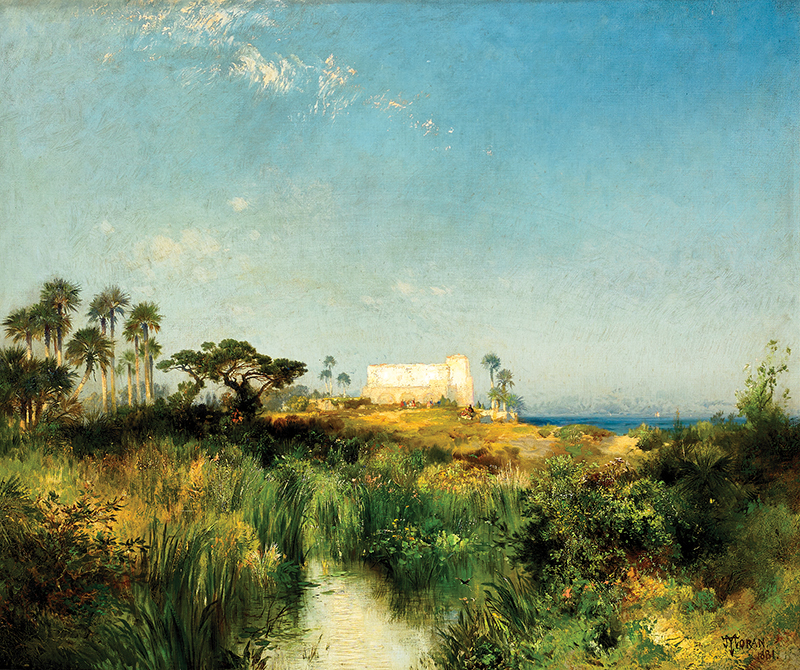
We had a house in the Mandarin neighborhood of Jacksonville. Our daughter lives in it now. The house was built in 1885 and is prominent in the historical records of the city. It was in the Scott family. They had a sawmill that was on the same creek that ran by the house. They would float logs down the creek to the mill. The house was what spurred our Florida collection. We needed something to hang on the walls.
It all started with a map. In 1978 I was in New York on a business trip and stopped by the Old Print Shop, on Lexington Avenue, and Kenneth Newman showed me a map of Jacksonville that he had just obtained from the Metropolitan Museum. They had two copies and Kenneth took one in exchange for something else the museum wanted. I’ve never seen another one, although I’m told that the state of Florida has one in the capitol building in Tallahassee. It was an aerial view made in 1893, as if you were in a hot air balloon, with the names of all the places marked. It was fun studying it, trying to recognize things and seeing what had changed. After we hung it on the wall, we began to look around for paintings of Florida.
Our Florida collection started fairly modestly with stuff we found in antiques stores and garage sales. From the beginning I think we had an eye for things that was better than average. Over time we were able to afford better and better artworks. In the early days, New York art dealers wouldn’t even turn to look at us when we came in the gallery. Then gradually they realized what we were looking for and started to bring things to our attention.
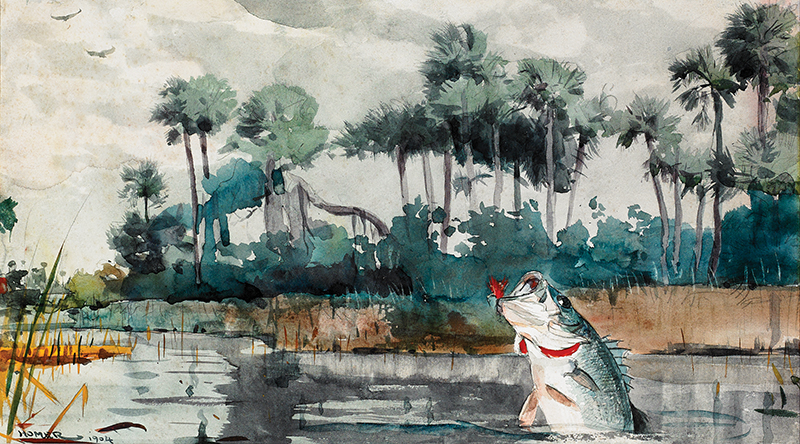
Your collection goes back to the early years of Florida as a state.
We think of the Wild West as the American frontier, but Florida was also a contested frontier. Both Spain and Great Britain competed for control in the early nineteenth century, and it only became part of the United States in 1819. We know about the Indian wars in the West but the Seminole Wars in Florida were the longest and most extensive Indian wars in US history.
We have a portrait of Osceola, the leader of the Seminoles, by Robert Curtis about 1838, which is a very significant historical piece. And we also have a portrait of Andrew Jackson by Aaron Corwine. We have eight drawings by George Catlin from one of the albums he made to sell to rich people in Europe. This album had been broken up and we purchased all the drawings in it of Seminole Indians from Florida.
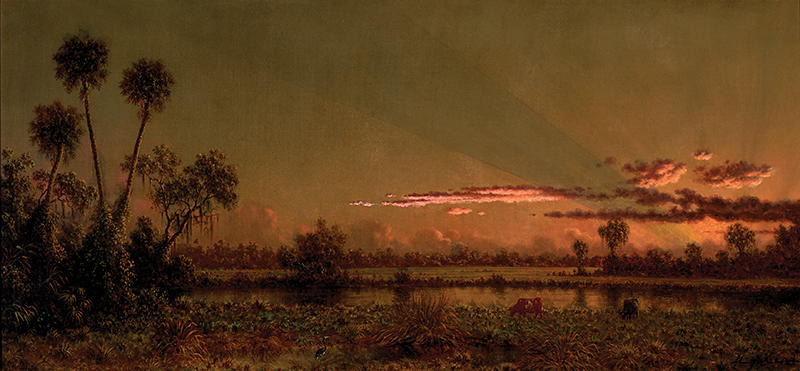
Most people know about cowboys in the American West but don’t know that there were cowboys in Florida. We have an interesting record of that. In 1895 Frederic Remington came to Florida to write and illustrate a story about “cracker cowboys” for Harper’s magazine. Our painting of two mounted cowboys was made for the article. We even know the name of the lead rider, who had the picturesque name of Morgan Bonaparte Mizell. There’s a sentence in Remington’s article that explains what the painting is about: “Two very emaciated Texas ponies pattered down the street, bearing wild-looking individuals, whose hanging hair and drooping hats and generally bedraggled appearance would remind you at once of the Spanish-moss which hangs so quietly and helplessly to the limbs of the oaks out in the swamps.” Clearly the cowboys Remington painted were not the most reputable characters, but for all that it’s a wonderful painting. And it opens up a bit of history.
Sometimes we spot things that have been misidentified. For example, we have a painting by Thomas Moran of the old watchtower in Saint Augustine. No one had identified it correctly because the architecture of the watchtower has been changed. We took the painting down to the historical society and compared it with photographs of what the tower looked like originally.
When did Florida start to become a subject for major American artists?
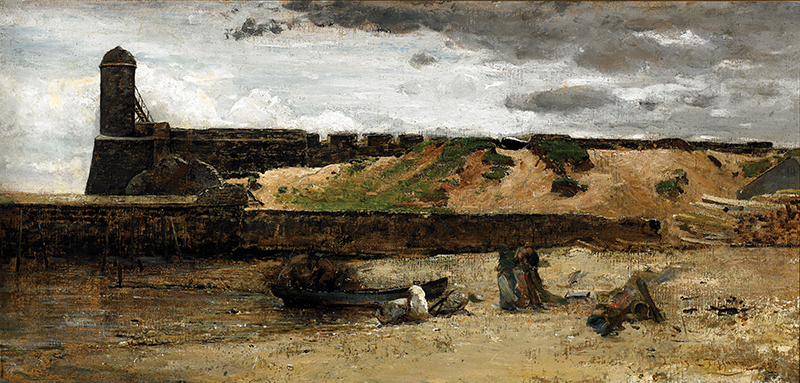
It was Henry Flagler who transformed Florida from what was considered a dismal swamp into America’s vacationland. Flagler started off in Cleveland as the partner of John D. Rockefeller and became one of the richest men in America. Rockefeller was an introvert, who managed the books in the back office. Flagler was an extrovert and was the guy who negotiated most of the slippery deals with the railroads and other companies. Around 1885 Flagler visited Florida because of its warm climate, for his wife’s health, and became interested in constructing hotels and railroads in the state.
One of the first things Flagler did was to persuade Martin Johnson Heade, the great luminist painter, to settle in Saint Augustine and make paintings of the beauties of Florida. We have two landscapes by Heade, a view of Lake Aalto, between Jacksonville and Gainesville, and a twilight picture with a town pasture—a beautiful picture. We also have a still life of oleanders lying on a velvet cloth. Ted Stebbins in Boston, who’s the expert on Heade, told us that it’s the only picture of oleanders that Heade painted.
By the late nineteenth century, Florida had become a destination for painters. We have two paintings by Louis Comfort Tiffany of Saint Augustine. He had just come back from the Middle East and clearly was interested in the exotic quality of Florida and Saint Augustine, which was so different from New England. One shows the Spanish fort, which dates from the seventeenth century and has walls constructed from coquina, or ground-up seashells; the other is a view of a building that is now the home of the Saint Augustine Historical Society and was then the home of Kirby Smith, a Civil War general. Aside from the paintings we own, so far as I know the only other painting by Tiffany of Florida is a second view of the citadel in Saint Augustine in the Morse Museum in Orlando. Late in life Tiffany did visit Miami and made around a dozen drawings. We have one of those.
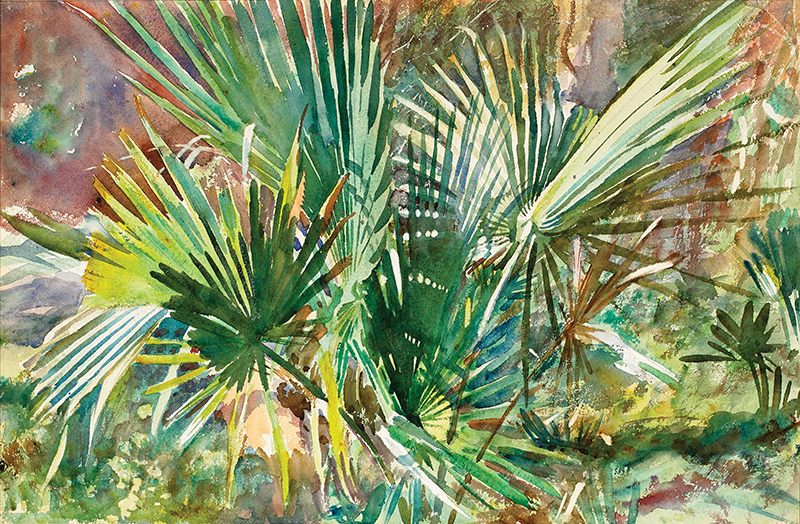
What are some of the highlights of your collection?
Winslow Homer would come down to Florida to escape the cold of Maine in winter and go fishing on the Homosassa River. We have a watercolor of a bass jumping by him that’s often considered his finest Florida piece. In Philip Beam’s book on Homer there’s a photograph of the artist in his studio at Prout’s Neck, and you can see our watercolor in that photo: it’s the picture on the wall just across from his desk. Homer never sold the painting. He left it to his brother when he died, and it then passed down through the family until we acquired it.
John Singer Sargent came to Florida in 1917 as the guest of James Deering, the founder of International Harvester, and stayed at Deering’s spectacular estate Vizcaya, in Coconut Grove outside Miami. Sargent was only in Florida for three weeks, but in that time made about thirty watercolors, fourteen of which were purchased in the year he made them by the Worcester Art Museum. They’re among the greatest watercolors that Sargent made. We had to search for quite awhile to find one that wasn’t already in captivity. In ours, it’s amazing the way Sargent captured the flicker of sunlight on the palm fronds.
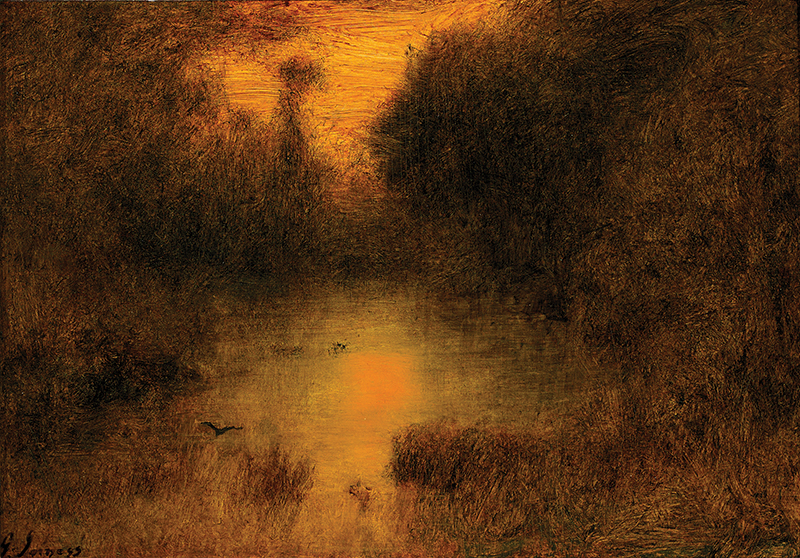
Another major figure in American art who came to Florida is George Inness, who would come down to Tarpon Springs. In fact, one of Inness’s most famous paintings, Home of the Heron, in the Art Institute of Chicago, is a view of Florida. Ours is a smaller painting. Michael Quick, who’s the authority on Inness, came to our house to see it. I remember thinking “what in the world will we do if he says it’s not right?” But he verified it. He was very pleased with it. He felt that it was quite a lot like the left-hand corner of the painting in Chicago. Not exactly a preliminary study, but building up for the Chicago picture. It’s a painting that doesn’t hit you at first, but then grows on you over time. Inness’s son, George Jr., settled in Tarpon Springs and created an art compound there that’s still very active.
Have there been surprises?
Sometimes you can find a really remarkable painting by an artist who is not all that well known. One of these is the painting by Jerry Farnsworth of Madame Kovar, a lion tamer. She’s got a whip and a bright red coat and there’s something haunting about her expression. She seems both strong and very vulnerable and alert to danger. In fact, just five years after the painting was made Madame Kovar was killed by one of her big cats just before a show in Havana, right in front of her children, who were standing outside the cage.
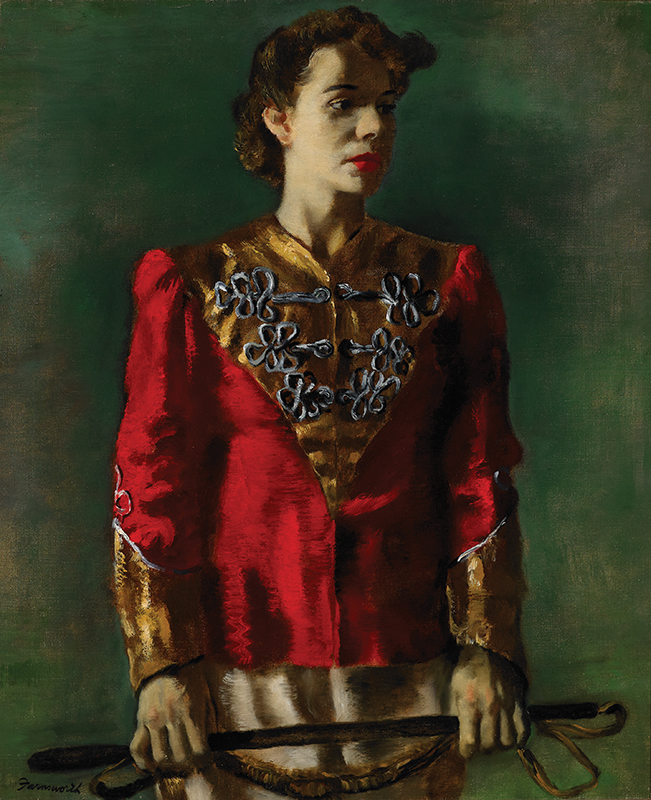
Remarkably, after we loaned the painting to the Harn Museum for a show about the circus, we got a call from Madame Kovar’s granddaughter, and we had a long talk. Guess what she did for a living? She was a lion tamer, too, and her brothers were tightrope walkers who had a high-wire act. Something about the circus and living dangerously seemed to run in the family.
The whole development of the area around Sarasota was very much based on the fact that John Ringling decided to make it the winter home of his circus.
How did you decide to make your gift to the Harn Museum?
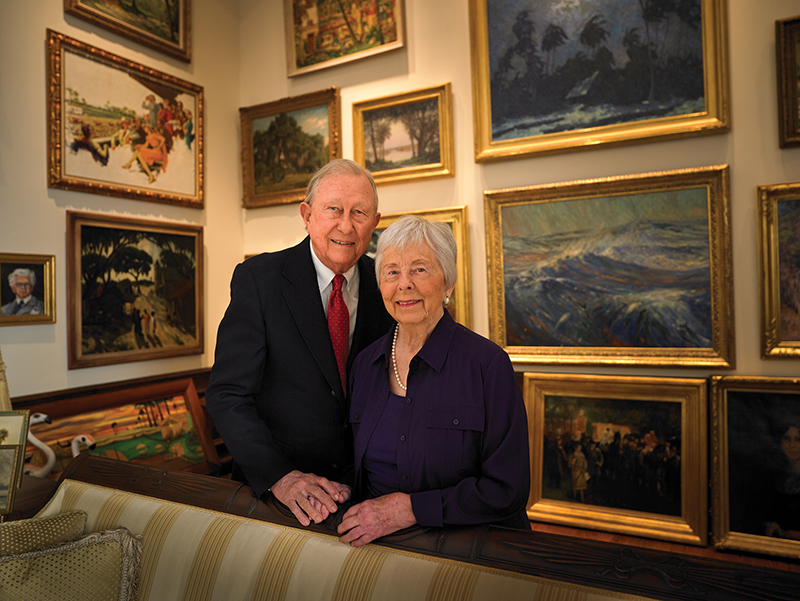
We wanted to keep the collection together and we wanted to share it more widely. A lot of people were interested, but we wanted to keep the collection in Florida, and education is very important to us. The University of Florida at Gainesville is the top-ranking university in the state, and, while the Harn Museum doesn’t have a large collection, it’s very well run and they emphasize its educational function. The past two presidents of the university were very interested in the collection for that reason. They feel that it could become an important part of the core identity of the university, and are already offering two courses built around the collection.
The museum is in the process of designing an expansion that will provide more space for exhibitions and a dedicated gallery for the Florida collection. They’ve selected architects Tod Williams and Billie Tsien, who are very gifted and experienced, with a national reputation. When we built the collection, we were interested in artistic quality, but we were also interested in the many windows it opens into the history of Florida. We hope the collection will open the eyes of young people, who will experience it in new ways. One of the central themes of the collection is that Florida is a fascinating and very special place.
